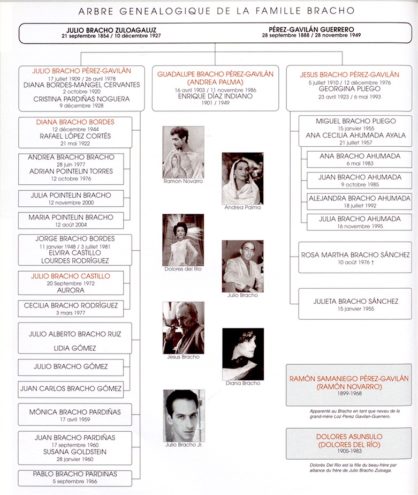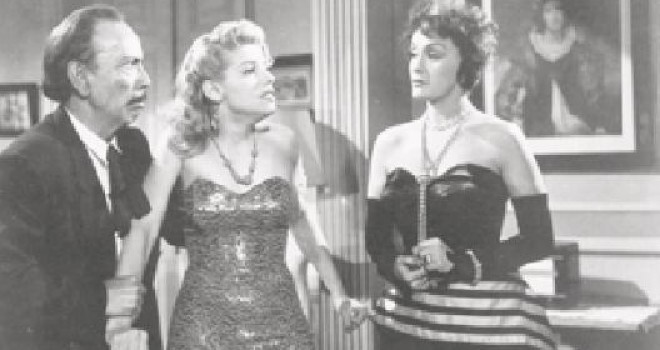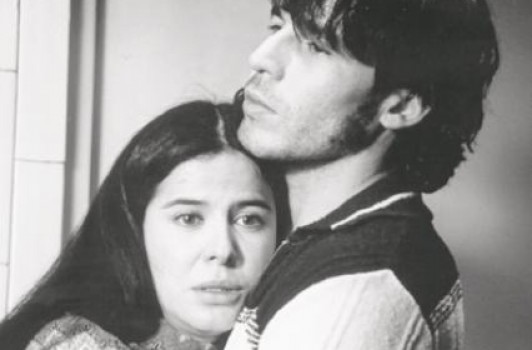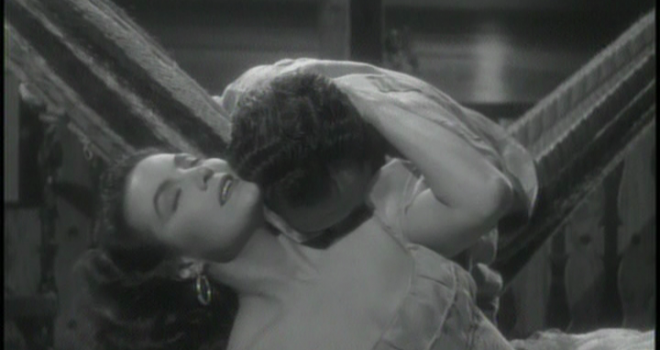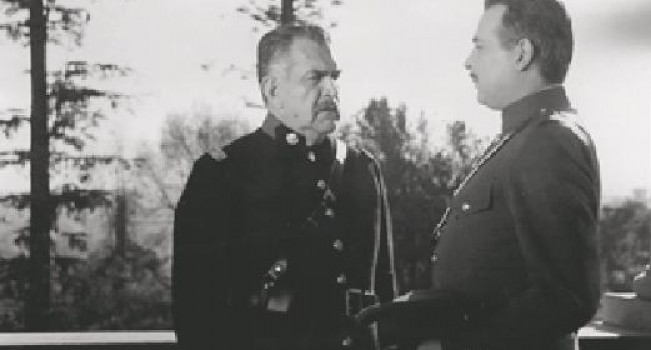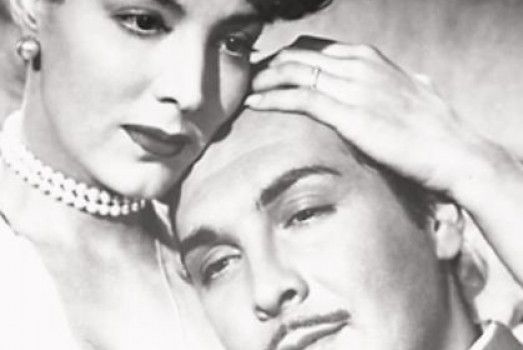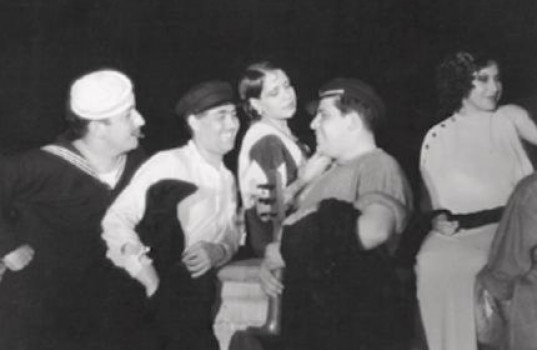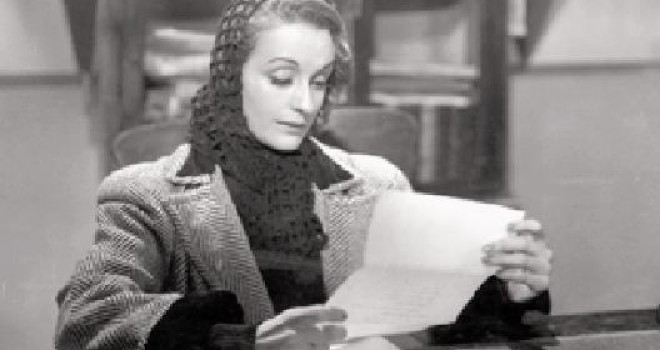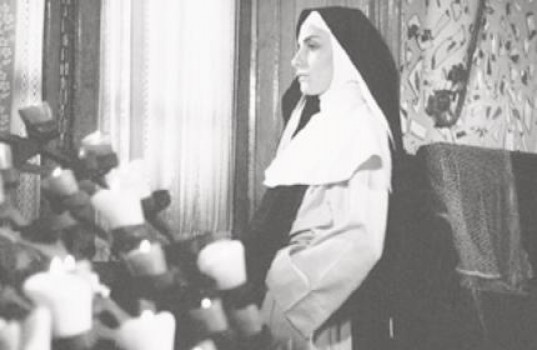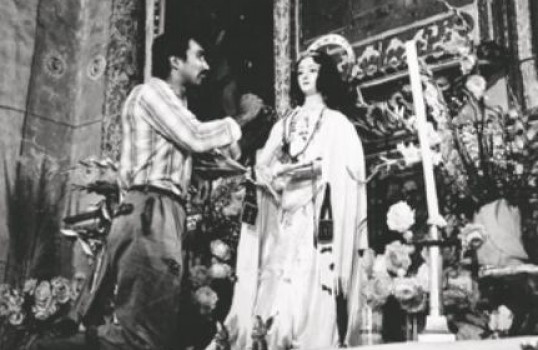The Bracho Family is an icon of the Mexican cinema. Born in Durango in the early 20th century, three of the Braco brothers and sisters, Guadelupe, Julio and Jesús, worked in film. Many years later, two descendants of Julio, his daughter Diana and his grandson Julio, carry on the film legend. From a very young age, Guadelupe Bracho learnt how to make hats and worked in London at the La Ciudad shop. Towards 1927, she opened her own shop, Casa Andrea. Introduced in the theatre world through her profession, Guadelupe, who loved acting, made her debut as an actress in Maya, a play staged at the Arbeu Theatre, substituting for actress Isabela Corona. Later, her experience as a milliner led her to make exclusive hats for Marlene Dietrich. From then on, Guadelupe concentrated on acting and became, with her first The Woman of the Port (La Mujer del puerto), the first Mexican film star as Andrea Palma.
Andrea’s two younger brothers, Julio and Jesús Bracho include Fernando de Fuentes’ Doña Bárbara, Luis Alcoriza’s The Shark Hunters (Tiburoneros) and Tlayucan, Luis Buñuel’s The Exterminating Angel (El Ángel exterminador) and The Criminal Life of Archibaldo de La Cruz (Ensayo de un crimen). He also created the sets for Cantaclaro, La Cobarde, História de un corazón, Inmaculada, Llévame en tus brazos, María la vox, La Mujer de todos, Women Who Work (Mujeres que trabajan), Stolen Paradise (Paraíso robado), Rosenda, San Felipe de Jesús and La Sombra del caudillo, all directed by his brother Julio Bracho who introduced revolutionary changes in Mexican theatre in the thirties and who was one of the most prestigious film-makers of the golden age of Mexican cinema. His films are notable for their aesthetic qualities (including the close-ups of stars’ faces), a personal touch and recurring themes: the presence of trains in Distinto amanecer, Rosenda, Rostros olvidados, Paraíso robado; the corruption of trade unions in Distinto amanecer, Llévame en tus brazos and Espejismo de la la ciudad; and the use of various music genres, as Julio Bracho was a great music lover.
After studying philosophy and literature in New York, Julio’s daughter, Diana Bracho, decided to try her luck at acting. In 1973, she taking part in an acting workshop with José Luis Ibáñez when Arturo Ripstein asked Diana to feature in El Castillo de la pureza. Then she worked with the greatest film-makers of the seventies, in Ripstein’s El Santo Oficio, Jaime Humberto Hermosillo’s El Cumpleanos del perro, Miguel Littin’s Actas de Marusia and Felipe Cazals’ Las Poquianchis, among many others. She became one of the most popular faces of the time. Later, Diana Bracho was the first Mexican stage actress to chair the Mexican Academy of Motion Picture Science and Art, for two consecutive terms.
Recently, Diana’s nephew, Julio, son of her brother Jorge, also turned to acting and was remarkable in films like Eva López Sánchez’s ¿Francisca, de qué lado estás? and Alfonso Arau’s Zapata, as well as in a few short films. He perpétuâtes the Bracho film dynasty.
Jésus Ibarra
Cinema is often considered to be a family affair. Perhaps it all started with the Lumière brothers. A “film couple” is born out of a certain logic, an encounter which might lead to more… Most of the time it concerns directors and actresses, but sometimes, it also has to do with male and female directors. The relationship probably finds its roots in the circumstances.We could mention the Varda-Demy, Bergman-Rossellini, Minnelli-Garland couples, as well as their offspring, Mathieu, Isabella, Usa, and fathers and sons (or daughters) — Chaplin, Depardieu, Stévenin and others.
Brothers and sisters work together less often, except, for example, for Francis and John Ford, the famous Marx Brothers (four of them, initially), the just as famous Warner and Taviani brothers, the lesser-known Kaufman brothers (one of them was Dziga Vertov), the Breillat, Poliakoff (Marina Vlady and Odile Versois), Dorléac (Catherine Deneuve and Françoise Dorléac), Bardot (Brigitte et Mijanou), Gish sisters… One was usually more famous than the other. Generally, not more than two generations are concerned,
Yet there is almost a unique case in world film history. Over three generations, the Bracho family has yielded some of the most famous actors, actresses, directors, set designers, from the silent days (with Ramon Novarro) to today (young actor Julio Bracho Jr. a famous Mexican telenovela star), and the golden age of Mexican cinema with director Julio Bracho, actresses Dolores del Rio and Andréa Palma, set designer Jesús Bracho and, more recently, Diana Bracho who made a brilliant debut with Arturo Ripstein.



